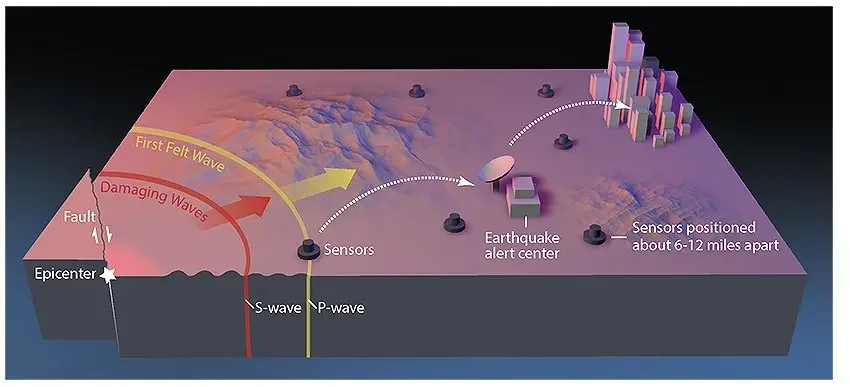Η application ShakeAlert, είναι ένα αμερικανικό σύστημα έγκαιρης warningς σεισμών και αναπτύχθηκε από το Γεωλογικό Ινστιτούτο των USA (US Geological Survey) and their partners to typically provide you with up to 20 seconds of early warning before the arrival of significant tremors, or even one minute in extreme conditions.
If you're near the epicenter, you might not get the notification very quickly - but it could be enough to protect yourself.

After nearly two decades of development, ShakeAlert now operates in California, Oregon and Washington state, where it is considered 83 percent complete. The USGS is considering expanding the system to Alaska next.
The ShakeAlert app was last tested with an earthquake in October, and it took less than 10 seconds to send about 2,1 million warnings to Californians. Fortunately, there were no reports of serious injuries. Let's mention that every little bit of early information can help prepare you mentally for what's to come.
How can a push notification reach the phone faster than the shaking of the earthquake? "It's a multi-step process and I really find it fascinating," says Dave Croker, a member of the ShakeAlert operations team at the USGS.
The Washington Post met with Croker at a USGS station a few miles from California's infamous San Andreas Fault, The scientist demonstrated how the system works, starting with the cell phone.
Smartphones have a feature that Croker says is a game-changer in earthquake safety: they always know our location.
So when a USGS station detects an earthquake starting somewhere, the network can calculate where else the vibration will reach. Knowing your location means apps and cell towers can only broadcast the alerts to phones in places that might need them.





